MaryAnn Bernal's Blog, page 275
May 30, 2014
Unique Silk Cloth Found in Emperor Henry VII's Coffin
by Rossella Lorenzi
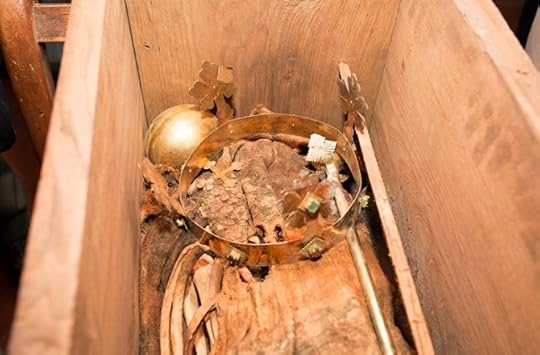 The coffin of Henry VII of Luxembourg as it was opened.
The coffin of Henry VII of Luxembourg as it was opened.
A unique silk cloth has been found in the tomb of German king and Holy Roman emperor Henry VII of Luxembourg (1275-1313), among bones and what remains of his boiled head, Italian researchers announced this week.
Resting in Pisa Cathedral, the remains of Henry VII were exhumed last fall with the aim of getting more insights into the emperor’s physical features and cause of death.
The research is still ongoing, but the opening of the sarcophagus has already revealed a medieval treasure trove.
Photos: Artifacts Revealed in Tomb of King Henry VII
"Along with the emperor's mortal remains, the coffin contained a crown, a scepter and an orb, all made in gilded silver. But the most unexpected find was a large, magnificent silk cloth," Moira Brunori, at the Center for Textile Restoration in Pisa, told Discovery News. "It's extremely well preserved." Brunori said.
As the researchers opened the coffin for the third time since Henry VII's death in 1313 -- previous investigations were carried in 1727 and in 1921 -- they found the emperor's bones wrapped in the silk cloth. The crown, scepter and orb were laid on top of the cloth.
The three objects were commonly associated with the emperor. Indeed a set of contemporary miniatures often show Henry VII wearing them during his journey through Italy.
Royal Pain: 6 Strange Ailments Of Famous Rulers
Celebrated as the "alto Arrigo" (high Henry) in Dante's Divine Comedy, Henry is best remembered for his struggle to reestablish imperial control over the city-states of 14th-century Italy.
He was crowned King of Germany in 1308 and two years later he descended into Italy with the aim of pacifying destructive disputes between Guelf (pro-papal) and Ghibelline (pro-imperial) factions. His goal was to be crowned emperor and restore the glory of the Holy Roman Empire.
After meeting strong opposition among anti-imperialist Guelf lords, Henry entered Rome by force, and was indeed crowned Holy Roman Emperor on June 29, 1312.
"He who came to reform Italy before she was ready for it," as Dante described Henry VII, died just a year after his coronation, having failed to defeat opposition by a secular Avignon papacy, city-states and lay kingdoms.
Photos: Royals Lost and Never Found
Henry died prematurely at Buonconvento, near Siena, on Aug. 24, 1313. Rumors of him being poisoned began to spread.
The emperor's body was hastily buried; two years later he was reburied in the Cathedral of Pisa.
"Not having enough time to treat the corpse for transportation, the emperor's followers burned his body, detached the head and boiled it. His bones were kept in wine to better preserve them," Brunori said.
Indeed researchers found in the coffin ashes and bones showing signs of burning.
http://news.discovery.com/history/archaeology/unique-silk-cloth-found-in-emperor-henry-viis-coffin-140530.htm

 The coffin of Henry VII of Luxembourg as it was opened.
The coffin of Henry VII of Luxembourg as it was opened. A unique silk cloth has been found in the tomb of German king and Holy Roman emperor Henry VII of Luxembourg (1275-1313), among bones and what remains of his boiled head, Italian researchers announced this week.
Resting in Pisa Cathedral, the remains of Henry VII were exhumed last fall with the aim of getting more insights into the emperor’s physical features and cause of death.
The research is still ongoing, but the opening of the sarcophagus has already revealed a medieval treasure trove.
Photos: Artifacts Revealed in Tomb of King Henry VII
"Along with the emperor's mortal remains, the coffin contained a crown, a scepter and an orb, all made in gilded silver. But the most unexpected find was a large, magnificent silk cloth," Moira Brunori, at the Center for Textile Restoration in Pisa, told Discovery News. "It's extremely well preserved." Brunori said.
As the researchers opened the coffin for the third time since Henry VII's death in 1313 -- previous investigations were carried in 1727 and in 1921 -- they found the emperor's bones wrapped in the silk cloth. The crown, scepter and orb were laid on top of the cloth.
The three objects were commonly associated with the emperor. Indeed a set of contemporary miniatures often show Henry VII wearing them during his journey through Italy.
Royal Pain: 6 Strange Ailments Of Famous Rulers
Celebrated as the "alto Arrigo" (high Henry) in Dante's Divine Comedy, Henry is best remembered for his struggle to reestablish imperial control over the city-states of 14th-century Italy.
He was crowned King of Germany in 1308 and two years later he descended into Italy with the aim of pacifying destructive disputes between Guelf (pro-papal) and Ghibelline (pro-imperial) factions. His goal was to be crowned emperor and restore the glory of the Holy Roman Empire.
After meeting strong opposition among anti-imperialist Guelf lords, Henry entered Rome by force, and was indeed crowned Holy Roman Emperor on June 29, 1312.
"He who came to reform Italy before she was ready for it," as Dante described Henry VII, died just a year after his coronation, having failed to defeat opposition by a secular Avignon papacy, city-states and lay kingdoms.
Photos: Royals Lost and Never Found
Henry died prematurely at Buonconvento, near Siena, on Aug. 24, 1313. Rumors of him being poisoned began to spread.
The emperor's body was hastily buried; two years later he was reburied in the Cathedral of Pisa.
"Not having enough time to treat the corpse for transportation, the emperor's followers burned his body, detached the head and boiled it. His bones were kept in wine to better preserve them," Brunori said.
Indeed researchers found in the coffin ashes and bones showing signs of burning.
http://news.discovery.com/history/archaeology/unique-silk-cloth-found-in-emperor-henry-viis-coffin-140530.htm

Published on May 30, 2014 16:58
The Lod mosaics – a carnival of animals
Uncovered in Israel during building work, the Lod mosaics date from AD300 and are exceptionally well preserved. But what do they represent – and where are all the people?
By Christopher Lightfoot
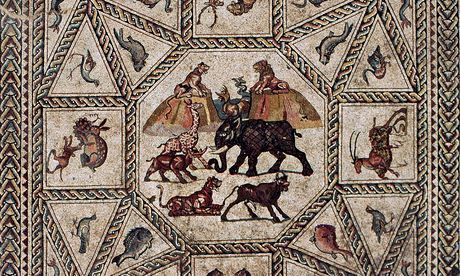
Detail of the central panel of the Lod mosaic. Photograph: Nicky Davidov/Israel Antiquities Authority. The pace of construction of new buildings, roads, and infrastructure throughout the world has led to a number of spectacular archaeological finds in recent years. Among the most significant is that of a series of Roman mosaic floors at Lod in Israel, almost the centre of interaction between Roman, Christian, Jewish and Muslim culture, accidentally uncovered during road construction in 1996. Dating from around AD300, the mosaics are a riot of birds, shells, fishes and animals and include one of the earliest known images of both a rhinoceros and a giraffe. Although some of the animals appear to be tearing each other apart, they share seraphic, although slightly sinister, expressions, which one historian went so far as to describe as "erotic".
The Lod mosaics were of such exceptional quality, and in such an excellent state of preservation, that it was decided, wisely, to rebury them until a plan had been formulated to secure their long-term future. It wasn't until 2009 that they were carefully lifted and conserved by specialists from the Israel Antiquities Authority, revealing fascinating details about the way they were laid that included impressions of the feet and hands of the original craftsmen left in the wet mortar. It is highly unusual that such details of the construction process are preserved, and it is to the credit of the Israeli team that they not only documented the markings in situ, but also lifted them so that they can be exhibited alongside the mosaics.
Since 2012, while a permanent home for the mosaics was built in Israel, the collection has been displayed at the Metropolitan Museum of Art, New York as well as the Louvre in Paris and the Altes Museum in Berlin. Next month it will be on show at Waddesdon Manor, in collaboration with the British Museum, in its only UK exhibition before travelling to St Petersburg and then back to the Shelby White and Leon Levy Lod Mosaic Archaeological Centre.
Lod is ancient Lydda, destroyed twice by the Romans, first during the Jewish war in AD66, then during the Jewish revolt in the last years of Trajan's reign (AD98-117). Refounded by Hadrian as Diospolis, it remained in Roman hands until becoming a Christian city and eventually succumbing to Arab conquerors in AD636. More recently, between 1943 and 1948, Lod was home to RAF Lydda, which later formed the nucleus of Ben Gurion airport.
Little survived of the architecture of the building that housed the mosaics, so it has proved difficult to identify its use and, indeed, its date. However, it is attractive to speculate that the series of large rooms, sumptuously decorated with mosaics and probably intended for receptions and meetings, was constructed in the early third century AD, as a result of Lod's increased wealth and status after the city was promoted to the rank of Roman colony by the emperor Septimus Severus (r AD 193–211).
The main panel of the largest mosaic is divided into a series of smaller squares and triangles in which various birds, fish and animals are depicted. These surround a larger octagonal space populated by ferocious wild animals – a lion and lioness, an elephant, a giraffe, a rhinoceros, a tiger, and a wild bull – with a mountainous landscape flanking a ketos, a mythical sea creature. One adjoining panel of animal scenes clearly echoes the design and subject matter of the main panel, but the other is completely filled with a lively marine scene. Fish and dolphins are shown swimming in a transparent sea, accompanied by shells and two large merchant ships facing in opposite directions, one shown with billowing sails, the other with its mast and sails lowered.
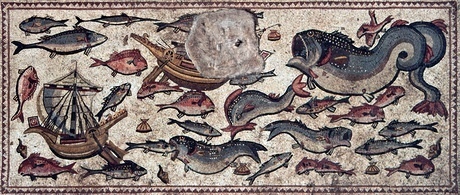 Surprisingly naturalistic … the marine panel Photograph: Photograph: Nicky Davidov/Israel Antiquities Authority
Surprisingly naturalistic … the marine panel Photograph: Photograph: Nicky Davidov/Israel Antiquities Authority
Viewers in antiquity were encouraged to walk around and, indeed, over a mosaic to see scenes orientated in various directions. As a result, figures can be depicted as floating against a minimal background, which is ideal for heavenly divinities or sea creatures. Another feature of mosaics is that shapes and scenes are created not out of painted or carved lines but by the painstaking arrangement of individual tiles, or tesserae. The result is a surprisingly naturalistic trompe l'oeil effect, unexpected in this medium.
The Lod mosaic panels display much charm with their brightly coloured figures and lively scenes. Several of the creatures appear to have smiles on their faces, even though they are often engaged in ferocious life-and-death struggles. But what makes the mosaics so special is that their subject matter is both familiar and yet also very odd. Marine and hunting scenes are both common on Roman mosaics, but they invariably contain human or semi-divine figures such as cupids who are depicted as hunters or fishermen.
There are no people on the Lod mosaics at all, not even sailors manning the two Roman cargo ships on the marine panel. And yet the creatures shown are not outside the inhabited world – the fish are recognisable as species that could be caught in the Mediterranean (and, indeed, in one small hexagonal panel they are shown loaded into a basket ready for market); the birds, too, are familiar; the dog in one square appears to be wearing a leash, and even the exotic animals would have been known to those who frequented the games and wild beast shows in the amphitheatre. Finally, on the main axis of the central panel is another square containing a large golden krater (a large vase for holding wine and water). A pair of female panthers cling to the vase, and serve as handles. Remarkably, at least three such vessels are known to have actually existed – one is a purple-veined marble vase that was found in the ruins of the Byzantine church at Petra in Jordan. Significantly, perhaps, the other examples of panther-handled vessels are dated to the late second and early third century AD.
The panthers and the krater point to the pagan cult of Dionysus, known as the god of wine and ecstasy. Many depictions of his triumphal procession in ancient art include panthers, tigers, lions, elephants, and giraffes, all consorting peacefully together, as on the Lod mosaics. On the other hand, the inclusion of a rhinoceros and a wild bull in the central panel would bring to mind – at least to an educated Roman viewer – descriptions by the poet Martial (AD40–102) of the inaugural games at the Colosseum in AD80, in which one of the main events was a contest between a bull and a rhinoceros. The latter animal, never before seen in the Roman world, would have been brought all the way from the plains of east Africa, presumably via the Indian Ocean and Red Sea, and it caused such a stir that contemporary bronze coins minted in Rome feature a rhinoceros on their obverse.
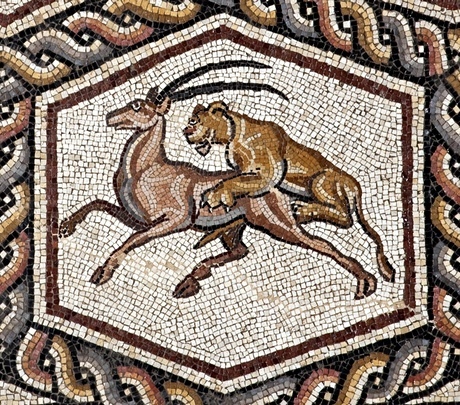 Romans would recognise wild animals from triumphal processions and displays at the Colosseum.
Romans would recognise wild animals from triumphal processions and displays at the Colosseum.
Despite the apparent pagan and very Roman imagery, arguments can also be made for seeing the Lod mosaics as a product of Jewish society. Although not universal, a ban on human representations was a common feature of more orthodox communities, and Lod was known in antiquity as a centre of Jewish scholarship. In addition, the idea of a peaceable kingdom comes from the Book of Isaiah (11:6-9) and forms part of the messianic prophecy of a time when not only humans, but all God's creatures, would live together in peace and harmony. Likewise, the Jewish word for the sea monster in the Book of Jonah (1:17) is translated in the Septuagint as the Greek ketos. On the Arch of Titus in Rome, the creature appears on the base of the seven-branch menorah that was taken as part of the spoils from the temple after the sack of Jerusalem in AD70. It is also interesting to note that during the Jewish revol, Lod was again besieged and sacked by the Romans, commanded by the general Lusius Quietus, whose name, corrupted to Kitos, later gave the conflict the title the Kitos war. The appearance of a mythological ketos in the central panel of the Lod mosaic, flanked by a lion and lioness, and in the incongruous company of other real-life creatures, may therefore have had some significance and hidden meaning for Jews living in Lod during the third century.
Without hard evidence about the person who ordered the mosaics or about the nature of the building in which they were found, it is impossible to offer a definitive interpretation of the Lod mosaics. They remain an enigma, but one that still delights and attracts admiration – even though the modern viewer may see them principally as a tour-de-force of decorative art. Indeed, the mosaics were always meant to impress with their scale, costliness and permanency – true symbols of the Roman world that produced them.
• Christopher Lightfoot is curator of Roman art at the the Metropolitan Museum of Art, New York. Predators and Prey: A Roman Mosaic from Lod, Israel is at Waddesdon Manor, Aylesbury, from Thursday until 2 November.
http://www.theguardian.com/artanddesign/2014/may/30/lod-mosaic-carnival-animals-william-lightfoot

By Christopher Lightfoot

Detail of the central panel of the Lod mosaic. Photograph: Nicky Davidov/Israel Antiquities Authority. The pace of construction of new buildings, roads, and infrastructure throughout the world has led to a number of spectacular archaeological finds in recent years. Among the most significant is that of a series of Roman mosaic floors at Lod in Israel, almost the centre of interaction between Roman, Christian, Jewish and Muslim culture, accidentally uncovered during road construction in 1996. Dating from around AD300, the mosaics are a riot of birds, shells, fishes and animals and include one of the earliest known images of both a rhinoceros and a giraffe. Although some of the animals appear to be tearing each other apart, they share seraphic, although slightly sinister, expressions, which one historian went so far as to describe as "erotic".
The Lod mosaics were of such exceptional quality, and in such an excellent state of preservation, that it was decided, wisely, to rebury them until a plan had been formulated to secure their long-term future. It wasn't until 2009 that they were carefully lifted and conserved by specialists from the Israel Antiquities Authority, revealing fascinating details about the way they were laid that included impressions of the feet and hands of the original craftsmen left in the wet mortar. It is highly unusual that such details of the construction process are preserved, and it is to the credit of the Israeli team that they not only documented the markings in situ, but also lifted them so that they can be exhibited alongside the mosaics.
Since 2012, while a permanent home for the mosaics was built in Israel, the collection has been displayed at the Metropolitan Museum of Art, New York as well as the Louvre in Paris and the Altes Museum in Berlin. Next month it will be on show at Waddesdon Manor, in collaboration with the British Museum, in its only UK exhibition before travelling to St Petersburg and then back to the Shelby White and Leon Levy Lod Mosaic Archaeological Centre.
Lod is ancient Lydda, destroyed twice by the Romans, first during the Jewish war in AD66, then during the Jewish revolt in the last years of Trajan's reign (AD98-117). Refounded by Hadrian as Diospolis, it remained in Roman hands until becoming a Christian city and eventually succumbing to Arab conquerors in AD636. More recently, between 1943 and 1948, Lod was home to RAF Lydda, which later formed the nucleus of Ben Gurion airport.
Little survived of the architecture of the building that housed the mosaics, so it has proved difficult to identify its use and, indeed, its date. However, it is attractive to speculate that the series of large rooms, sumptuously decorated with mosaics and probably intended for receptions and meetings, was constructed in the early third century AD, as a result of Lod's increased wealth and status after the city was promoted to the rank of Roman colony by the emperor Septimus Severus (r AD 193–211).
The main panel of the largest mosaic is divided into a series of smaller squares and triangles in which various birds, fish and animals are depicted. These surround a larger octagonal space populated by ferocious wild animals – a lion and lioness, an elephant, a giraffe, a rhinoceros, a tiger, and a wild bull – with a mountainous landscape flanking a ketos, a mythical sea creature. One adjoining panel of animal scenes clearly echoes the design and subject matter of the main panel, but the other is completely filled with a lively marine scene. Fish and dolphins are shown swimming in a transparent sea, accompanied by shells and two large merchant ships facing in opposite directions, one shown with billowing sails, the other with its mast and sails lowered.
 Surprisingly naturalistic … the marine panel Photograph: Photograph: Nicky Davidov/Israel Antiquities Authority
Surprisingly naturalistic … the marine panel Photograph: Photograph: Nicky Davidov/Israel Antiquities Authority Viewers in antiquity were encouraged to walk around and, indeed, over a mosaic to see scenes orientated in various directions. As a result, figures can be depicted as floating against a minimal background, which is ideal for heavenly divinities or sea creatures. Another feature of mosaics is that shapes and scenes are created not out of painted or carved lines but by the painstaking arrangement of individual tiles, or tesserae. The result is a surprisingly naturalistic trompe l'oeil effect, unexpected in this medium.
The Lod mosaic panels display much charm with their brightly coloured figures and lively scenes. Several of the creatures appear to have smiles on their faces, even though they are often engaged in ferocious life-and-death struggles. But what makes the mosaics so special is that their subject matter is both familiar and yet also very odd. Marine and hunting scenes are both common on Roman mosaics, but they invariably contain human or semi-divine figures such as cupids who are depicted as hunters or fishermen.
There are no people on the Lod mosaics at all, not even sailors manning the two Roman cargo ships on the marine panel. And yet the creatures shown are not outside the inhabited world – the fish are recognisable as species that could be caught in the Mediterranean (and, indeed, in one small hexagonal panel they are shown loaded into a basket ready for market); the birds, too, are familiar; the dog in one square appears to be wearing a leash, and even the exotic animals would have been known to those who frequented the games and wild beast shows in the amphitheatre. Finally, on the main axis of the central panel is another square containing a large golden krater (a large vase for holding wine and water). A pair of female panthers cling to the vase, and serve as handles. Remarkably, at least three such vessels are known to have actually existed – one is a purple-veined marble vase that was found in the ruins of the Byzantine church at Petra in Jordan. Significantly, perhaps, the other examples of panther-handled vessels are dated to the late second and early third century AD.
The panthers and the krater point to the pagan cult of Dionysus, known as the god of wine and ecstasy. Many depictions of his triumphal procession in ancient art include panthers, tigers, lions, elephants, and giraffes, all consorting peacefully together, as on the Lod mosaics. On the other hand, the inclusion of a rhinoceros and a wild bull in the central panel would bring to mind – at least to an educated Roman viewer – descriptions by the poet Martial (AD40–102) of the inaugural games at the Colosseum in AD80, in which one of the main events was a contest between a bull and a rhinoceros. The latter animal, never before seen in the Roman world, would have been brought all the way from the plains of east Africa, presumably via the Indian Ocean and Red Sea, and it caused such a stir that contemporary bronze coins minted in Rome feature a rhinoceros on their obverse.
 Romans would recognise wild animals from triumphal processions and displays at the Colosseum.
Romans would recognise wild animals from triumphal processions and displays at the Colosseum. Despite the apparent pagan and very Roman imagery, arguments can also be made for seeing the Lod mosaics as a product of Jewish society. Although not universal, a ban on human representations was a common feature of more orthodox communities, and Lod was known in antiquity as a centre of Jewish scholarship. In addition, the idea of a peaceable kingdom comes from the Book of Isaiah (11:6-9) and forms part of the messianic prophecy of a time when not only humans, but all God's creatures, would live together in peace and harmony. Likewise, the Jewish word for the sea monster in the Book of Jonah (1:17) is translated in the Septuagint as the Greek ketos. On the Arch of Titus in Rome, the creature appears on the base of the seven-branch menorah that was taken as part of the spoils from the temple after the sack of Jerusalem in AD70. It is also interesting to note that during the Jewish revol, Lod was again besieged and sacked by the Romans, commanded by the general Lusius Quietus, whose name, corrupted to Kitos, later gave the conflict the title the Kitos war. The appearance of a mythological ketos in the central panel of the Lod mosaic, flanked by a lion and lioness, and in the incongruous company of other real-life creatures, may therefore have had some significance and hidden meaning for Jews living in Lod during the third century.
Without hard evidence about the person who ordered the mosaics or about the nature of the building in which they were found, it is impossible to offer a definitive interpretation of the Lod mosaics. They remain an enigma, but one that still delights and attracts admiration – even though the modern viewer may see them principally as a tour-de-force of decorative art. Indeed, the mosaics were always meant to impress with their scale, costliness and permanency – true symbols of the Roman world that produced them.
• Christopher Lightfoot is curator of Roman art at the the Metropolitan Museum of Art, New York. Predators and Prey: A Roman Mosaic from Lod, Israel is at Waddesdon Manor, Aylesbury, from Thursday until 2 November.
http://www.theguardian.com/artanddesign/2014/may/30/lod-mosaic-carnival-animals-william-lightfoot

Published on May 30, 2014 16:50
Volcanic Evidence Opens New Maya Mystery
By Becky Oskin
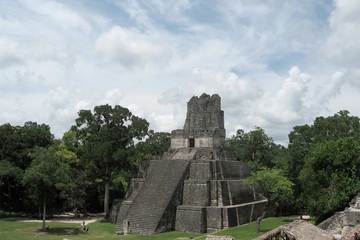
 Temple in the Kingdom of Tikal, one of the most prominent of the Classic Period.
Temple in the Kingdom of Tikal, one of the most prominent of the Classic Period.
Credit: © Science/AAASTough and tiny zircon crystals have helped researchers rule out an enormous volcanic blast as the source of ash used to make Maya pottery, deepening this long-running archaeological mystery.
"While we're a little sad not to have solved the mystery, we're really confident we can say the most likely source quite conclusively isn't a match," said lead author Kevin Coffey, a geology master's student at the University of California, Los Angeles.
However, the results did a reveal a tantalizing new pottery puzzle for scientists to solve — whether the Maya's ash came from one volcano or many spewing cones.
"Every time I turn another leaf in this thing, it opens up a new problem," said study co-author Anabel Ford, director of the MesoAmerican Research Center at the University of California, Santa Barbara.
Volcanic VIPs
Potters at Maya cities on the Caribbean side of Central America fused volcanic ash with local limestone to form household and ceremonial pottery, because the ash made their ceramics easier to fire. The distinctive recipe was a hallmark of the Late Classic Period from A.D. 600 to 900, Ford said.
With thousands of people living in cities such as El Pilar and Tikal, the Mayan potters burned through several tons of volcanic ash every year, Ford has estimated. But no one can figure out where the ash came from.
The mystery begins with the fact that there just aren't any volcanoes in eastern Central America. Nor have archaeologists found evidence the Maya mined ash locally.
They could have hauled in the ash from the many volcanoes in what is today's El Salvador and Guatemala. But the Maya carried loads on their backs, eschewing roads or pack animals, Ford said. She thinks a convenient quarry makes more sense than hauling tons of ash overland every year. However, other archaeologists think a long-distance trade network was possible.
So how about big volcanic explosions? Maybe ash drifted in by air. The new study explores this option.
Under a microscope, the pottery ash looks fresh, with sharp edges, which does suggest the volcanic source was a recent eruption. (In the moist jungle, volcanic ash quickly breaks down.)
Coffey zeroed in on Ilopango volcano in El Salvador as a likely source. A devastating eruption from Ilopango destroyed and buried nearby Mayan cities in the fifth century, similar to Mount Vesuvius and Pompeii, and coated Central America in ash. [Preserved Pompeii: Photos Reveal City in Ash]
Coffey compared zircons from the Ilopango ash to zircons from three El Pilar potsherds. Zircons can survive just about any scorching heat on Earth's surface, from a meteorite impact to a volcanic disaster to a potter's kiln.
But instead of solving the mystery, the researchers' findings ended up eliminating Ilopango from the list of sources.
Nope, not this one either
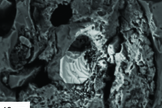 [image error]
[image error]
 A zircon crystal surrounded by volcanic ash in a Maya potsherd.
A zircon crystal surrounded by volcanic ash in a Maya potsherd.
Credit: Kevin CoffeyView full size imageZircons in volcanic ash and lava start to crystallize in the underground magma chamber, before the volcano erupts, so some are older than the actual blast. Some of the Ilopango crystals are as young as the eruption, while others are up to 250,000 years old.
The El Pilar potsherd zircons were much older; none were younger than 1 million years old, and one crystal was more than 1 billion years old. These ages present a new riddle for researchers to investigate: Where did this old ash come from? "It's very puzzling, because [the zircons] suggest these are much older volcanic deposits," Coffey said. "It's hard to preserve volcanic ash in the jungle," he added.
Though the researchers tested only a handful of pottery fragments, the chemical signature of the zircon crystals also differs among pots, hinting that the ash came from at least two volcanoes.
"Each time the volcanologists say this will nail it, but we still aren't any closer," Ford said.
A previous study tried to match chemical signatures from the El Pilar potsherds to Mexico's explosive El Chichón volcano, about 233 miles (375 kilometers) away. Instead, the results also ruled out El Chichón.
The UCLA team hopes to test more candidate volcanoes from the Pacific coast, and search for hidden ash deposits on the Yucatan Peninsula. There are 11 potential volcanoes lined up along western Central America. Analyzing more potsherds could also provide new clues to the origin of the ash, Coffey said.
"What we found was pretty surprising," Coffey told Live Science's Our Amazing Planet. "The mystery has gotten all the more mysterious."
The findings were published May 22 in the journal Geology.
http://www.livescience.com/45997-maya-pottery-volcanic-ash-mystery.html

 Temple in the Kingdom of Tikal, one of the most prominent of the Classic Period.
Temple in the Kingdom of Tikal, one of the most prominent of the Classic Period.Credit: © Science/AAASTough and tiny zircon crystals have helped researchers rule out an enormous volcanic blast as the source of ash used to make Maya pottery, deepening this long-running archaeological mystery.
"While we're a little sad not to have solved the mystery, we're really confident we can say the most likely source quite conclusively isn't a match," said lead author Kevin Coffey, a geology master's student at the University of California, Los Angeles.
However, the results did a reveal a tantalizing new pottery puzzle for scientists to solve — whether the Maya's ash came from one volcano or many spewing cones.
"Every time I turn another leaf in this thing, it opens up a new problem," said study co-author Anabel Ford, director of the MesoAmerican Research Center at the University of California, Santa Barbara.
Volcanic VIPs
Potters at Maya cities on the Caribbean side of Central America fused volcanic ash with local limestone to form household and ceremonial pottery, because the ash made their ceramics easier to fire. The distinctive recipe was a hallmark of the Late Classic Period from A.D. 600 to 900, Ford said.
With thousands of people living in cities such as El Pilar and Tikal, the Mayan potters burned through several tons of volcanic ash every year, Ford has estimated. But no one can figure out where the ash came from.
The mystery begins with the fact that there just aren't any volcanoes in eastern Central America. Nor have archaeologists found evidence the Maya mined ash locally.
They could have hauled in the ash from the many volcanoes in what is today's El Salvador and Guatemala. But the Maya carried loads on their backs, eschewing roads or pack animals, Ford said. She thinks a convenient quarry makes more sense than hauling tons of ash overland every year. However, other archaeologists think a long-distance trade network was possible.
So how about big volcanic explosions? Maybe ash drifted in by air. The new study explores this option.
Under a microscope, the pottery ash looks fresh, with sharp edges, which does suggest the volcanic source was a recent eruption. (In the moist jungle, volcanic ash quickly breaks down.)
Coffey zeroed in on Ilopango volcano in El Salvador as a likely source. A devastating eruption from Ilopango destroyed and buried nearby Mayan cities in the fifth century, similar to Mount Vesuvius and Pompeii, and coated Central America in ash. [Preserved Pompeii: Photos Reveal City in Ash]
Coffey compared zircons from the Ilopango ash to zircons from three El Pilar potsherds. Zircons can survive just about any scorching heat on Earth's surface, from a meteorite impact to a volcanic disaster to a potter's kiln.
But instead of solving the mystery, the researchers' findings ended up eliminating Ilopango from the list of sources.
Nope, not this one either
 [image error]
[image error]
 A zircon crystal surrounded by volcanic ash in a Maya potsherd.
A zircon crystal surrounded by volcanic ash in a Maya potsherd.Credit: Kevin CoffeyView full size imageZircons in volcanic ash and lava start to crystallize in the underground magma chamber, before the volcano erupts, so some are older than the actual blast. Some of the Ilopango crystals are as young as the eruption, while others are up to 250,000 years old.
The El Pilar potsherd zircons were much older; none were younger than 1 million years old, and one crystal was more than 1 billion years old. These ages present a new riddle for researchers to investigate: Where did this old ash come from? "It's very puzzling, because [the zircons] suggest these are much older volcanic deposits," Coffey said. "It's hard to preserve volcanic ash in the jungle," he added.
Though the researchers tested only a handful of pottery fragments, the chemical signature of the zircon crystals also differs among pots, hinting that the ash came from at least two volcanoes.
"Each time the volcanologists say this will nail it, but we still aren't any closer," Ford said.
A previous study tried to match chemical signatures from the El Pilar potsherds to Mexico's explosive El Chichón volcano, about 233 miles (375 kilometers) away. Instead, the results also ruled out El Chichón.
The UCLA team hopes to test more candidate volcanoes from the Pacific coast, and search for hidden ash deposits on the Yucatan Peninsula. There are 11 potential volcanoes lined up along western Central America. Analyzing more potsherds could also provide new clues to the origin of the ash, Coffey said.
"What we found was pretty surprising," Coffey told Live Science's Our Amazing Planet. "The mystery has gotten all the more mysterious."
The findings were published May 22 in the journal Geology.
http://www.livescience.com/45997-maya-pottery-volcanic-ash-mystery.html

Published on May 30, 2014 16:26
Ngaire Elder: BIG FUNDRAISER FOR BORN FREE'S BIG CAT NAP WEEK!
Ngaire Elder: BIG FUNDRAISER FOR BORN FREE'S BIG CAT NAP WEEK!: As you know Cecilia Spark supports animal protection and conservation and is a massive fan of elephants, lions and tigers, to name...
BIG FUNDRAISER FOR BORN FREE'S BIG CAT NAP WEEK!

As you know Cecilia Spark supports animal protection and conservation and is a massive fan of elephants, lions and tigers, to name but a few! She wanted to do something for charity and had a wee chat with me. Cecilia Spark came up with a fantastalistic idea.
Here is what she suggested:
All profits from the sale of my children's books bought during the month of June 2014 will be donated to the Born Free Foundation in support of their 2014 BIG CAT NAP Campaign.

The following books qualify:
The Adventures of Cecilia Spark: Brimstone ForestThe Adventures of Cecilia Spark: the Mystical Mountains of TerraThe Adventures of Cecilia Spark: Dragon's Star
My Nature Friends



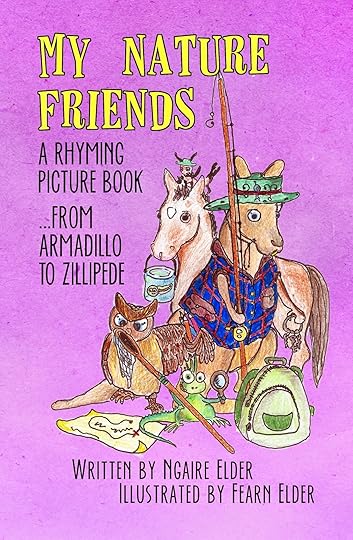
All sales count - ebook, audiobook or paperback.Did you know:
There are probably less than 30,000 lions left in the wild, chiefly threatened by human-lion conflict and ineffective wildlife management. The situation is particularly serious in West and Central Africa, where the unique regional sub-species is vanishing. Dr Hans Bauer, a lion biologist working for WildCRU at the University of Oxford, supported by Born Free, is working with governments in the region to protect these highly endangered lion populations.
 Born Free FoundationHow your money could help:
Born Free FoundationHow your money could help:
£5 could buy a vitamin boost for a rescued lion£7 could fund a tiger protection officer for a day£10 could feed a rescued cheetah cub for two days£25 could buy binoculars to help a warden protect wild tigers£40 could buy a rescued lion’s food for a week A message from Born Free about the Big Cat Nap:
"The Big Cat Nap is an awareness and fundraising week for our work with big cats, those that are in danger in the wild plus those that need to be rescued and given a lifetime of care."
Why not take a photo of yourself reading one of Cecilia Spark's books and share it with us and your family and friends on Facebook, Twitter and Instagram using the #BigCatNap hashtag? We will select our favourite one to use to promote next year’s Big Cat Nap! Sign Up @ Born Free
Sign Up @ Born Free
MAKE A DIFFERENCE TODAY, BUY A BOOK - THE PROFITS WILL HELP
SAVE A LION, CHEETAH OR TIGER!
LINKS FOR PURCHASING my children's books:
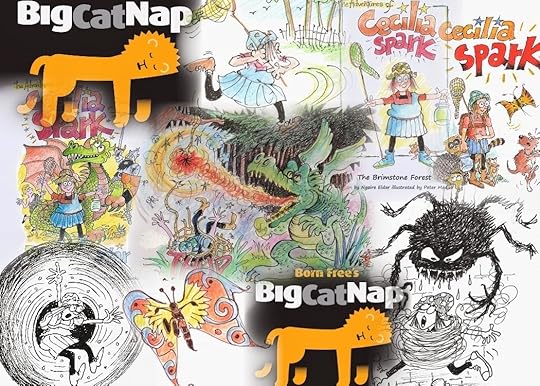 AMAZON UK LINK
AMAZON UK LINK
 AUDIBLE LINK
AUDIBLE LINK
 AMAZON US LINK
AMAZON US LINK
 iTUNES LINK
iTUNES LINK
If you want to find out more about Born Free's fantastic conservation work visit their website.
 BORN FREE FOUNDATION
I will let you know how much money we raised for Born Free's BIG CAT NAP.
Thank you for your support and for visiting my blog,
Ngaire x
BORN FREE FOUNDATION
I will let you know how much money we raised for Born Free's BIG CAT NAP.
Thank you for your support and for visiting my blog,
Ngaire x

BIG FUNDRAISER FOR BORN FREE'S BIG CAT NAP WEEK!

As you know Cecilia Spark supports animal protection and conservation and is a massive fan of elephants, lions and tigers, to name but a few! She wanted to do something for charity and had a wee chat with me. Cecilia Spark came up with a fantastalistic idea.
Here is what she suggested:
All profits from the sale of my children's books bought during the month of June 2014 will be donated to the Born Free Foundation in support of their 2014 BIG CAT NAP Campaign.

The following books qualify:
The Adventures of Cecilia Spark: Brimstone ForestThe Adventures of Cecilia Spark: the Mystical Mountains of TerraThe Adventures of Cecilia Spark: Dragon's Star
My Nature Friends




All sales count - ebook, audiobook or paperback.Did you know:
There are probably less than 30,000 lions left in the wild, chiefly threatened by human-lion conflict and ineffective wildlife management. The situation is particularly serious in West and Central Africa, where the unique regional sub-species is vanishing. Dr Hans Bauer, a lion biologist working for WildCRU at the University of Oxford, supported by Born Free, is working with governments in the region to protect these highly endangered lion populations.
 Born Free FoundationHow your money could help:
Born Free FoundationHow your money could help:£5 could buy a vitamin boost for a rescued lion£7 could fund a tiger protection officer for a day£10 could feed a rescued cheetah cub for two days£25 could buy binoculars to help a warden protect wild tigers£40 could buy a rescued lion’s food for a week A message from Born Free about the Big Cat Nap:
"The Big Cat Nap is an awareness and fundraising week for our work with big cats, those that are in danger in the wild plus those that need to be rescued and given a lifetime of care."
Why not take a photo of yourself reading one of Cecilia Spark's books and share it with us and your family and friends on Facebook, Twitter and Instagram using the #BigCatNap hashtag? We will select our favourite one to use to promote next year’s Big Cat Nap!
 Sign Up @ Born Free
Sign Up @ Born FreeMAKE A DIFFERENCE TODAY, BUY A BOOK - THE PROFITS WILL HELP
SAVE A LION, CHEETAH OR TIGER!
LINKS FOR PURCHASING my children's books:
 AMAZON UK LINK
AMAZON UK LINK
 AUDIBLE LINK
AUDIBLE LINK
 AMAZON US LINK
AMAZON US LINK
 iTUNES LINK
iTUNES LINKIf you want to find out more about Born Free's fantastic conservation work visit their website.
 BORN FREE FOUNDATION
I will let you know how much money we raised for Born Free's BIG CAT NAP.
Thank you for your support and for visiting my blog,
Ngaire x
BORN FREE FOUNDATION
I will let you know how much money we raised for Born Free's BIG CAT NAP.
Thank you for your support and for visiting my blog,
Ngaire x

Published on May 30, 2014 05:42
In the Midst: Dangerous Dive #Writers Prompt
In the Midst: Dangerous Dive #Writers Prompt: Dangerous Dive Writer’s Prompt The breathtaking view stopped me from donning my cold water wet suit, but only for a moment as the ...
 The breathtaking view stopped me from donning my cold water wet suit, but only for a moment as the excitement of diving in such tranquility stirred me. If only I had known the danger beforehand, then I would have stayed above water that day.
The breathtaking view stopped me from donning my cold water wet suit, but only for a moment as the excitement of diving in such tranquility stirred me. If only I had known the danger beforehand, then I would have stayed above water that day.
I stepped off the sailboat with my partner seconds behind me. We dove in the crystal clear icy water, and marveled at the beauty of the plant life and the unusual fish swimming about us. Excitement of discovering the world below the surface swam in my eyes.
Never far from each another, we exchanged hand signals and moved further from our boat. With my back to him, I did not know that my husband had reached over and turned the oxygen regulator off. By the time I realized what he had done, it was too late.
Excitement and wonderment turned to fear as I fought to reach the valve to turn it on. He grabbed hold of my arms, holding them in front of me, and wouldn't let go in spite of my struggles. This man who I professed my love to watched as I drew my last breath, and the ocean became my grave.
 Author K. Meador is a mom to two grown sons who are currently pursuing their adult lives outside the home. For the past several years, she has traveled with her job and has now settled down in Oklahoma City area.
Author K. Meador is a mom to two grown sons who are currently pursuing their adult lives outside the home. For the past several years, she has traveled with her job and has now settled down in Oklahoma City area.
She enjoys photography, walking, and visiting with family and friends.
Please leave a comment on this blog and share if you are so inclined.
Author K. Meador has six books published which are available in paperback, eBook, and four are on audio. Thank you. Your support is truly appreciated. Website
 The breathtaking view stopped me from donning my cold water wet suit, but only for a moment as the excitement of diving in such tranquility stirred me. If only I had known the danger beforehand, then I would have stayed above water that day.
The breathtaking view stopped me from donning my cold water wet suit, but only for a moment as the excitement of diving in such tranquility stirred me. If only I had known the danger beforehand, then I would have stayed above water that day. I stepped off the sailboat with my partner seconds behind me. We dove in the crystal clear icy water, and marveled at the beauty of the plant life and the unusual fish swimming about us. Excitement of discovering the world below the surface swam in my eyes.
Never far from each another, we exchanged hand signals and moved further from our boat. With my back to him, I did not know that my husband had reached over and turned the oxygen regulator off. By the time I realized what he had done, it was too late.
Excitement and wonderment turned to fear as I fought to reach the valve to turn it on. He grabbed hold of my arms, holding them in front of me, and wouldn't let go in spite of my struggles. This man who I professed my love to watched as I drew my last breath, and the ocean became my grave.
 Author K. Meador is a mom to two grown sons who are currently pursuing their adult lives outside the home. For the past several years, she has traveled with her job and has now settled down in Oklahoma City area.
Author K. Meador is a mom to two grown sons who are currently pursuing their adult lives outside the home. For the past several years, she has traveled with her job and has now settled down in Oklahoma City area.She enjoys photography, walking, and visiting with family and friends.
Please leave a comment on this blog and share if you are so inclined.
Author K. Meador has six books published which are available in paperback, eBook, and four are on audio. Thank you. Your support is truly appreciated. Website

Published on May 30, 2014 05:34
History Trivia - Elizabethan playwright Christopher Marlowe stabbed to death in a pub brawl in Deptford.
May 30
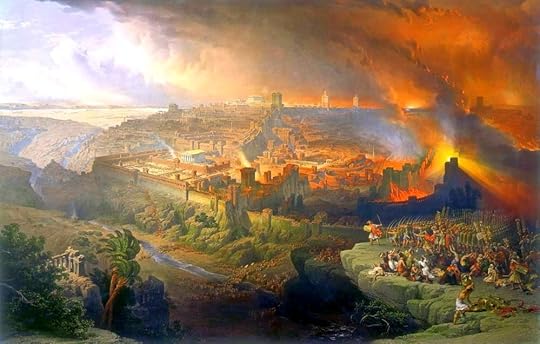
70 Siege of Jerusalem: Titus and his Roman legions breached the Second Wall of Jerusalem. The Jewish wars financed the construction of the Flavian Amphitheater, which took ten years to build.
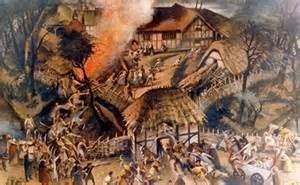
1381 English Boer uprising began in Essex.
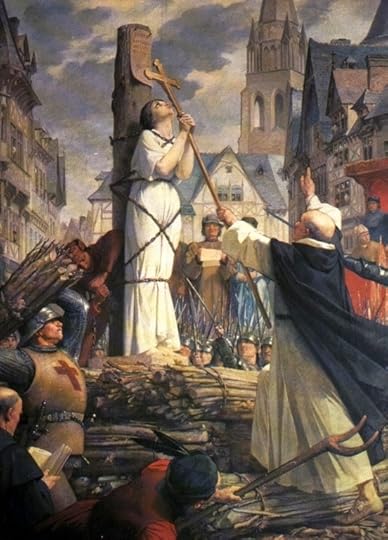
1431 French heroine Joan of Arc was burned at the stake in Rouen by the English.
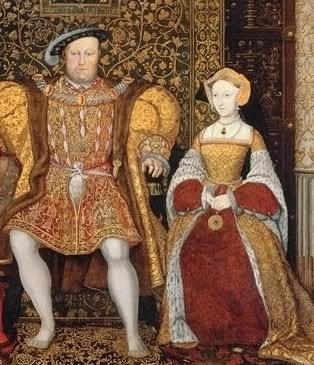
1536 King Henry VIII of England married Jane Seymour, a lady-in-waiting to his first two wives.

1593 Leading Elizabethan playwright Christopher Marlowe was stabbed to death in a pub brawl in Deptford.


70 Siege of Jerusalem: Titus and his Roman legions breached the Second Wall of Jerusalem. The Jewish wars financed the construction of the Flavian Amphitheater, which took ten years to build.

1381 English Boer uprising began in Essex.

1431 French heroine Joan of Arc was burned at the stake in Rouen by the English.

1536 King Henry VIII of England married Jane Seymour, a lady-in-waiting to his first two wives.

1593 Leading Elizabethan playwright Christopher Marlowe was stabbed to death in a pub brawl in Deptford.

Published on May 30, 2014 05:28
May 29, 2014
American's Visit to China's Forbidden City Revealed in Old Journal
By Owen Jarus
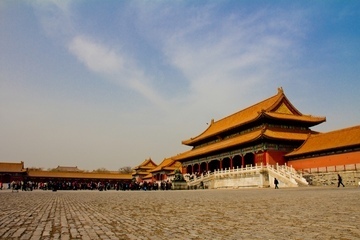
 The Forbidden City (also called Zijin Cheng) is a 72-hectare (178 acres) palace complex in Beijing that was used by the emperors of China from A.D. 1420 to 1911.
The Forbidden City (also called Zijin Cheng) is a 72-hectare (178 acres) palace complex in Beijing that was used by the emperors of China from A.D. 1420 to 1911.
Credit: Pocholo Calapre | Shutterstock
Newly analyzed artifacts and a 200-year-old journal reveal the remarkable tale of the first American citizen to enter China's Forbidden City and meet the emperor.
The mission was based on a diplomatic deception, and lives would be lost on the journey, but in 1795 Andreas Everardus van Braam Houckgeest would get to see the Forbidden City, a palace complex of more than 900 buildings that was off-limits even to most Chinese. He saw it at a time when China was wealthy and at the height of its power.
At one point Houckgeest was shown to the emperor's favorite apartment, which gave him a view of a mountain covered with temples.
In Houckgeest's journal, he writes of his visit, as translated into English in the 18th century: "This work seems to represent the enterprise of the giants who attempted to scale the Heavens: at least rocks heaped upon rocks recall that ancient fiction to the mind. The assemblage of the buildings and picturesque embellishments of the mountains afford a view of which the pen can give no adequate idea …"
Bruce MacLaren, a Chinese art specialist at the firm Bonhams, has been researching Houckgeest's tale and presented his findings recently at a symposium at Toronto's Royal Ontario Museum. While scholars are aware of the tale, MacLaren's research adds new details and insights.
Maclaren slightly modified these 200-year-old translations to make them more understandable today.
Enticed by democracy
Houckgeest (born in 1739) was a Dutch citizen who had spent much of his life moving between China and Europe, working for the Dutch East India Co. However, in 1783, when the American Revolutionary War ended, Houckgeest decided to travel to Charleston, South Carolina, and make a new start. [10 Epic Battles That Changed History]
"He loved the idea of American democracy, he actually watched it very closely from Holland and watched [Thomas Paine's] ideas happen. He took a keen interest in it and wanted to move to be a part of it," MacLaren told Live Science in an interview. In 1784, Houckgeest took the oath of allegiance and became a naturalized citizen of the United States.
Life in America would prove difficult for Houckgeest, as he lost three of his children to typhoid and his rice plantation near Charleston faltered, MacLaren said. His financial difficulties would force him to return to China by the 1790s.
Diplomatic deception
Houckgeest came up with an idea that would allow him to get back on his feet. A key problem that European traders faced was China's tight restrictions, merchants being largely restricted to an area on the Pearl River Delta, MacLaren said.
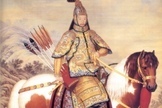
[image error] By 1795 the Qianlong emperor had ruled China for 60 years.
By 1795 the Qianlong emperor had ruled China for 60 years.
Credit: windmoon | Shutterstock
View full size imageIn 1793, a British mission to the Qianlong emperor, the man who ruled China, failed spectacularly, in part because British ambassador George Macartney refused to kowtow (prostrate himself) before the emperor.
Houckgeest made a proposal to Dutch officials in Batavia (modern-day Jakarta, Indonesia) that he lead a mission to the Qianlong emperor to try to give Dutch traders better access to the country. Making the visit in 1795, during the Qianlong emperor's 60th year of rule, would give the Dutch an excuse to visit him.
Houckgeest also claimed that delegations from other European countries were going to visit China that year. In fact, MacLaren found that no other missions appear to have been planned and Houckgeest seems to have made this claim up to put pressure on the Dutch to approve his mission.
The Dutch officials approved Houckgeest's proposal, but decided that he should be second in command rather than leader.
Entering the Forbidden City
On Nov. 24, 1794, Houckgeest left for the Forbidden City. Servants, secretaries and bodyguards being aided by about 1,300 laborers helped the envoys make their way from Canton to Beijing. The embassy had to move quickly to reach the Forbidden City by the Chinese New Year, MacLaren said.
The weary travelers would arrive on Jan. 9, 1795. "A number of the laborers died en route," MacLaren told the Toronto audience.
When they entered the Forbidden City, the travelers entered a seemingly fantastical world. In his journal, Houckgeest found himself struggling to describe the palaces, temples and other sights that he saw within and near the Forbidden City. [In Photos: Art from China's Forbidden City]
"Instead of rashly undertaking to express and describe with my weak pen all that my eyes admired; instead of endeavouring to communicate to my reader's mind, the many, the varied and the extraordinary sensations produced incessantlyin mine by the sight of so many things, inwhich singularity, magnificence, boldness of design,and skill of execution were combined, it will be more simple and more natural to confessmy incapability," he wrote.
Although there was much ceremony during the meeting there were also lighter moments. At one point Houckgeest's hat fell off while bowing (something which the emperor laughed at), the journal noted. The delegation was also treated to a skating demonstration.
"The (emperor's) sled was drawn to another place, where a gate made of bamboo had been erected, having a leather ball suspended in the center. Two by two (the soldiers) skated over the ice with bows and arrows in their hands, and shot, one at the leather ball, and the other at a kind of hat, of leather also, laid upon the ice at a little distance from the gate," Houckgeest wrote in his journal.
The food was said to be terrible. At one point Houckgeest said he was served meat that had been gnawed on. He claimed the emperor himself had gnawed it, and he had been afforded a great honor.
"According to the opinion of the Chinese, it was the greatest favour that could be conferred, since we had it in our power to gnaw the bone that his Majesty had begun to clean," Houckgeest wrote.
At another point the diplomats had to figure out what to give the emperor after their baggage train arrived with their gifts broken.
"Not a single article has escaped undamaged. Everything that was fragile is reduced to fragments. The vessels containing provision, the cases filled with liquor, are broken," Houckgeest wrote.
Though the mission wouldn't open up the country to the Dutch, the emperor warmly welcomed the visitors.
Return to America
While Houckgeest traveled to China as a representative of Holland, he would return home to Philadelphia. Throughout all the hardship he remained an American citizen.
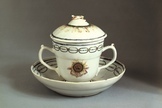
[image error] This cup and saucer, tailor-made for first lady Martha Washington, were part of a full Chinese porcelain service set brought back from China's Forbidden City by an American named Houckgeest.
Credit: George Washington's Mount Vernon
View full size imageMacLaren said that during his time in China, Houckgeest had commissioned about 1,800 drawings showing the country's interior (then inaccessible to foreigners). Houckgeest would show these drawings to the people of Philadelphia and give a Chinese service set, which had been decorated in Canton, to first lady Martha Washington as a gift. The names of the 15 states that were in the union in 1795 were engraved on the set.
Houckgeest built a house north of Philadelphia whose architecture was inspired by China, including a cupola on the roof that was shaped like a pagoda, MacLaren said. Extracts from his journal would be translated into English and published.
Again, however, Houckgeest would falter in America. In 1797 MacLaren said that he was forced to rely on friends to keep him out of debtors' prison, his financial problems apparently caused by excessive spending.
In 1798, Houckgeest left America for London, never to return. His art collection was sold at auction, and MacLaren said that today it is scattered around the world. Houckgeest died in 1801 in Amsterdam, apparently still an American citizen, MacLaren said. Houckgeest had been criticized in his final years for kowtowing before the emperor.
The symposium at Toronto’s Royal Ontario Museum accompanies an exhibition on the Forbidden City that runs to Sept. 1. It features numerous works of Chinese art.
http://www.livescience.com/45917-american-visit-to-china-forbidden-city.html

 The Forbidden City (also called Zijin Cheng) is a 72-hectare (178 acres) palace complex in Beijing that was used by the emperors of China from A.D. 1420 to 1911.
The Forbidden City (also called Zijin Cheng) is a 72-hectare (178 acres) palace complex in Beijing that was used by the emperors of China from A.D. 1420 to 1911.Credit: Pocholo Calapre | Shutterstock
Newly analyzed artifacts and a 200-year-old journal reveal the remarkable tale of the first American citizen to enter China's Forbidden City and meet the emperor.
The mission was based on a diplomatic deception, and lives would be lost on the journey, but in 1795 Andreas Everardus van Braam Houckgeest would get to see the Forbidden City, a palace complex of more than 900 buildings that was off-limits even to most Chinese. He saw it at a time when China was wealthy and at the height of its power.
At one point Houckgeest was shown to the emperor's favorite apartment, which gave him a view of a mountain covered with temples.
In Houckgeest's journal, he writes of his visit, as translated into English in the 18th century: "This work seems to represent the enterprise of the giants who attempted to scale the Heavens: at least rocks heaped upon rocks recall that ancient fiction to the mind. The assemblage of the buildings and picturesque embellishments of the mountains afford a view of which the pen can give no adequate idea …"
Bruce MacLaren, a Chinese art specialist at the firm Bonhams, has been researching Houckgeest's tale and presented his findings recently at a symposium at Toronto's Royal Ontario Museum. While scholars are aware of the tale, MacLaren's research adds new details and insights.
Maclaren slightly modified these 200-year-old translations to make them more understandable today.
Enticed by democracy
Houckgeest (born in 1739) was a Dutch citizen who had spent much of his life moving between China and Europe, working for the Dutch East India Co. However, in 1783, when the American Revolutionary War ended, Houckgeest decided to travel to Charleston, South Carolina, and make a new start. [10 Epic Battles That Changed History]
"He loved the idea of American democracy, he actually watched it very closely from Holland and watched [Thomas Paine's] ideas happen. He took a keen interest in it and wanted to move to be a part of it," MacLaren told Live Science in an interview. In 1784, Houckgeest took the oath of allegiance and became a naturalized citizen of the United States.
Life in America would prove difficult for Houckgeest, as he lost three of his children to typhoid and his rice plantation near Charleston faltered, MacLaren said. His financial difficulties would force him to return to China by the 1790s.
Diplomatic deception
Houckgeest came up with an idea that would allow him to get back on his feet. A key problem that European traders faced was China's tight restrictions, merchants being largely restricted to an area on the Pearl River Delta, MacLaren said.

[image error]
 By 1795 the Qianlong emperor had ruled China for 60 years.
By 1795 the Qianlong emperor had ruled China for 60 years.Credit: windmoon | Shutterstock
View full size imageIn 1793, a British mission to the Qianlong emperor, the man who ruled China, failed spectacularly, in part because British ambassador George Macartney refused to kowtow (prostrate himself) before the emperor.
Houckgeest made a proposal to Dutch officials in Batavia (modern-day Jakarta, Indonesia) that he lead a mission to the Qianlong emperor to try to give Dutch traders better access to the country. Making the visit in 1795, during the Qianlong emperor's 60th year of rule, would give the Dutch an excuse to visit him.
Houckgeest also claimed that delegations from other European countries were going to visit China that year. In fact, MacLaren found that no other missions appear to have been planned and Houckgeest seems to have made this claim up to put pressure on the Dutch to approve his mission.
The Dutch officials approved Houckgeest's proposal, but decided that he should be second in command rather than leader.
Entering the Forbidden City
On Nov. 24, 1794, Houckgeest left for the Forbidden City. Servants, secretaries and bodyguards being aided by about 1,300 laborers helped the envoys make their way from Canton to Beijing. The embassy had to move quickly to reach the Forbidden City by the Chinese New Year, MacLaren said.
The weary travelers would arrive on Jan. 9, 1795. "A number of the laborers died en route," MacLaren told the Toronto audience.
When they entered the Forbidden City, the travelers entered a seemingly fantastical world. In his journal, Houckgeest found himself struggling to describe the palaces, temples and other sights that he saw within and near the Forbidden City. [In Photos: Art from China's Forbidden City]
"Instead of rashly undertaking to express and describe with my weak pen all that my eyes admired; instead of endeavouring to communicate to my reader's mind, the many, the varied and the extraordinary sensations produced incessantlyin mine by the sight of so many things, inwhich singularity, magnificence, boldness of design,and skill of execution were combined, it will be more simple and more natural to confessmy incapability," he wrote.
Although there was much ceremony during the meeting there were also lighter moments. At one point Houckgeest's hat fell off while bowing (something which the emperor laughed at), the journal noted. The delegation was also treated to a skating demonstration.
"The (emperor's) sled was drawn to another place, where a gate made of bamboo had been erected, having a leather ball suspended in the center. Two by two (the soldiers) skated over the ice with bows and arrows in their hands, and shot, one at the leather ball, and the other at a kind of hat, of leather also, laid upon the ice at a little distance from the gate," Houckgeest wrote in his journal.
The food was said to be terrible. At one point Houckgeest said he was served meat that had been gnawed on. He claimed the emperor himself had gnawed it, and he had been afforded a great honor.
"According to the opinion of the Chinese, it was the greatest favour that could be conferred, since we had it in our power to gnaw the bone that his Majesty had begun to clean," Houckgeest wrote.
At another point the diplomats had to figure out what to give the emperor after their baggage train arrived with their gifts broken.
"Not a single article has escaped undamaged. Everything that was fragile is reduced to fragments. The vessels containing provision, the cases filled with liquor, are broken," Houckgeest wrote.
Though the mission wouldn't open up the country to the Dutch, the emperor warmly welcomed the visitors.
Return to America
While Houckgeest traveled to China as a representative of Holland, he would return home to Philadelphia. Throughout all the hardship he remained an American citizen.

[image error] This cup and saucer, tailor-made for first lady Martha Washington, were part of a full Chinese porcelain service set brought back from China's Forbidden City by an American named Houckgeest.
Credit: George Washington's Mount Vernon
View full size imageMacLaren said that during his time in China, Houckgeest had commissioned about 1,800 drawings showing the country's interior (then inaccessible to foreigners). Houckgeest would show these drawings to the people of Philadelphia and give a Chinese service set, which had been decorated in Canton, to first lady Martha Washington as a gift. The names of the 15 states that were in the union in 1795 were engraved on the set.
Houckgeest built a house north of Philadelphia whose architecture was inspired by China, including a cupola on the roof that was shaped like a pagoda, MacLaren said. Extracts from his journal would be translated into English and published.
Again, however, Houckgeest would falter in America. In 1797 MacLaren said that he was forced to rely on friends to keep him out of debtors' prison, his financial problems apparently caused by excessive spending.
In 1798, Houckgeest left America for London, never to return. His art collection was sold at auction, and MacLaren said that today it is scattered around the world. Houckgeest died in 1801 in Amsterdam, apparently still an American citizen, MacLaren said. Houckgeest had been criticized in his final years for kowtowing before the emperor.
The symposium at Toronto’s Royal Ontario Museum accompanies an exhibition on the Forbidden City that runs to Sept. 1. It features numerous works of Chinese art.
http://www.livescience.com/45917-american-visit-to-china-forbidden-city.html

Published on May 29, 2014 14:51
Ancient 'Fish Lizard' Graveyard Discovered Beneath Melting Glacier
By Tanya Lewis
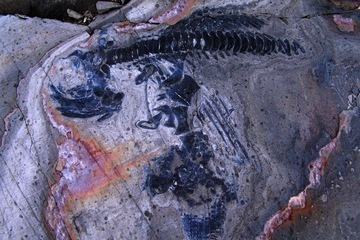
 One of the 46 ichthyosaur fossils discovered near a glacier in southern Chile.
One of the 46 ichthyosaur fossils discovered near a glacier in southern Chile.
Credit: Wolfgang StinnesbeckDozens of nearly complete skeletons of prehistoric marine reptiles have been uncovered near a melting glacier in southern Chile.
Scientists found 46 specimens from four different species of extinct ichthyosaurs. These creatures, whose Greek name means "fish lizards," were a group of large, fast-swimming marine reptiles that lived during the Mesozoic Era, about 245 million to 90 million years ago.
The newly discovered skeletons are from both embryos and adults. The creatures, likely killed during a series of catastrophic mudslides, were preserved in deep-sea sediments that were later exposed by the melting glacier, the researchers said in the study, published May 22 in the journal Geological Society of America Bulletin.
Ichthyosaurs had torpedo-shaped bodies with vertical flippers, and long snouts with teeth.
"They look a lot like dolphins today," said Wolfgang Stinnesbeck, a paleontologist at the University of Heidelberg in Germany and the leader of the study.
Stinnesbeck and his team found the Early Cretaceous (150 million to 100 million years old) specimens near the Tyndall Glacier in the Torres del Paine National Park in Chile. As the glacier melted, the rock containing the fossils became exposed, Stinnesbeck told Live Science.
Very few of the ancient reptiles have been found in South America before; only a few remnants of rib cages and vertebrae had been found.
The largest ichthyosaur skeleton unearthed in Chile measures more than 16 feet (5 meters) long. The skeletons were extremely well preserved — some even retained soft tissues. The researchers also found fossil embryos inside a female specimen. They assigned the fossils to the family Ophthalmosauridae.
These "fish lizards" probably hunted in an underwater canyon near the coastline, pursuing a diet of squidlike animals and fish, the researchers said. Occasionally, there would have been mudflows that cascaded into the water like an avalanche, and the researchers think these mudflows killed the ichthyosaurs. The animals likely became disoriented and drowned, getting sucked into the deep sea, where their bodies were entombed in the sediment, the researchers said.
Ichthyosaurs swam the seas at the same time as dinosaurs roamed the Earth and pterosaurs reigned the skies, but they may have died out before their land- and air-dwelling brethren, Stinnesbeck said. A global depletion of oxygen in the oceans, possibly due to volcanism, may have caused the extinction of these seagoing reptiles, he said.
The discovery of these creatures establishes the Chilean glacier as one of the prime sites for Early Cretaceous marine reptiles worldwide, the researchers said. But getting to the fossil site is half the battle. To reach it, the team had to drive for five hours, hike for 10 to 12 hours to camp and then hike another two hours, sometimes in heavy rain, hail or snow.
"This has been one of the toughest field camps I ever had," Stinnesbeck said.
http://www.livescience.com/45918-ichthyosaur-graveyard-chile-glacier.html

 One of the 46 ichthyosaur fossils discovered near a glacier in southern Chile.
One of the 46 ichthyosaur fossils discovered near a glacier in southern Chile.Credit: Wolfgang StinnesbeckDozens of nearly complete skeletons of prehistoric marine reptiles have been uncovered near a melting glacier in southern Chile.
Scientists found 46 specimens from four different species of extinct ichthyosaurs. These creatures, whose Greek name means "fish lizards," were a group of large, fast-swimming marine reptiles that lived during the Mesozoic Era, about 245 million to 90 million years ago.
The newly discovered skeletons are from both embryos and adults. The creatures, likely killed during a series of catastrophic mudslides, were preserved in deep-sea sediments that were later exposed by the melting glacier, the researchers said in the study, published May 22 in the journal Geological Society of America Bulletin.
Ichthyosaurs had torpedo-shaped bodies with vertical flippers, and long snouts with teeth.
"They look a lot like dolphins today," said Wolfgang Stinnesbeck, a paleontologist at the University of Heidelberg in Germany and the leader of the study.
Stinnesbeck and his team found the Early Cretaceous (150 million to 100 million years old) specimens near the Tyndall Glacier in the Torres del Paine National Park in Chile. As the glacier melted, the rock containing the fossils became exposed, Stinnesbeck told Live Science.
Very few of the ancient reptiles have been found in South America before; only a few remnants of rib cages and vertebrae had been found.
The largest ichthyosaur skeleton unearthed in Chile measures more than 16 feet (5 meters) long. The skeletons were extremely well preserved — some even retained soft tissues. The researchers also found fossil embryos inside a female specimen. They assigned the fossils to the family Ophthalmosauridae.
These "fish lizards" probably hunted in an underwater canyon near the coastline, pursuing a diet of squidlike animals and fish, the researchers said. Occasionally, there would have been mudflows that cascaded into the water like an avalanche, and the researchers think these mudflows killed the ichthyosaurs. The animals likely became disoriented and drowned, getting sucked into the deep sea, where their bodies were entombed in the sediment, the researchers said.
Ichthyosaurs swam the seas at the same time as dinosaurs roamed the Earth and pterosaurs reigned the skies, but they may have died out before their land- and air-dwelling brethren, Stinnesbeck said. A global depletion of oxygen in the oceans, possibly due to volcanism, may have caused the extinction of these seagoing reptiles, he said.
The discovery of these creatures establishes the Chilean glacier as one of the prime sites for Early Cretaceous marine reptiles worldwide, the researchers said. But getting to the fossil site is half the battle. To reach it, the team had to drive for five hours, hike for 10 to 12 hours to camp and then hike another two hours, sometimes in heavy rain, hail or snow.
"This has been one of the toughest field camps I ever had," Stinnesbeck said.
http://www.livescience.com/45918-ichthyosaur-graveyard-chile-glacier.html

Published on May 29, 2014 14:45
History Trivia - Charles II arrives in London from exile in the Netherlands to reclaim his throne
May 29
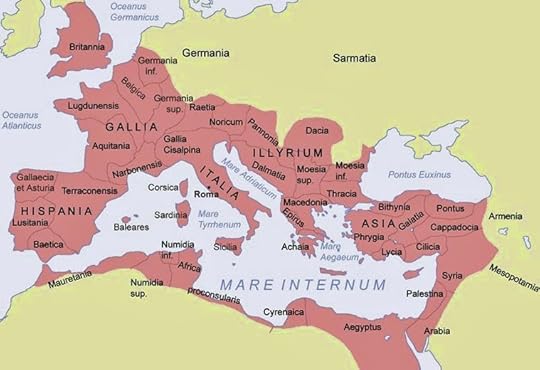
363 Roman Emperor Julian defeated the Sassanid army in the Battle of Ctesiphon, under the walls of the Sassanid capital, but was unable to take the city.
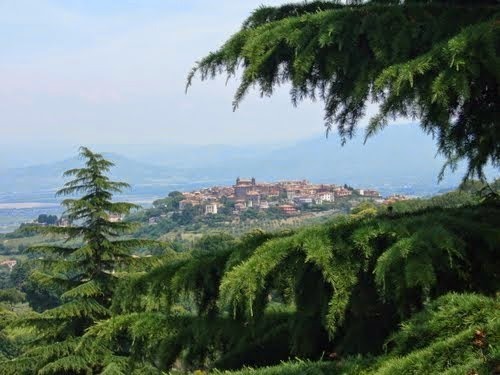 1167 Battle of Monte Porzio – A Roman army supporting Pope Alexander III was defeated by Christian of Buch and Rainald of Dassel.
1167 Battle of Monte Porzio – A Roman army supporting Pope Alexander III was defeated by Christian of Buch and Rainald of Dassel.
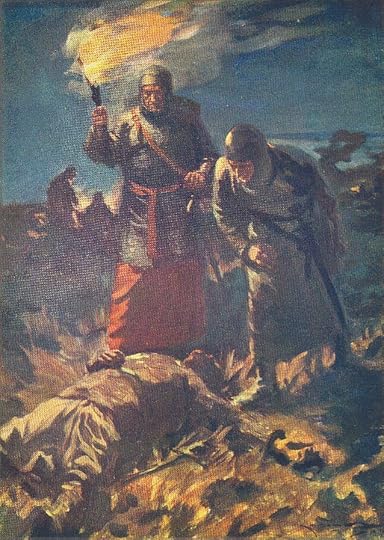 1176 Battle of Legnano: The Lombard League defeated Emperor Frederick I.
1176 Battle of Legnano: The Lombard League defeated Emperor Frederick I.
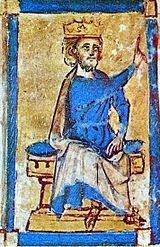
1259 King Christopher I of Denmark died.
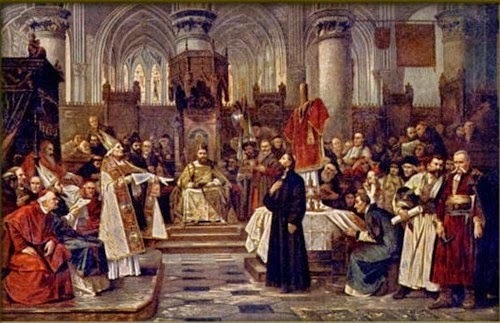
1414 Council of Constance.
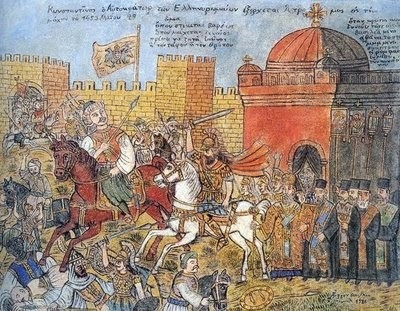
1453 The Roman Empire in the east (Byzantine Empire) came to an end as Ottoman sultan Mehmet II captured Constantinople.
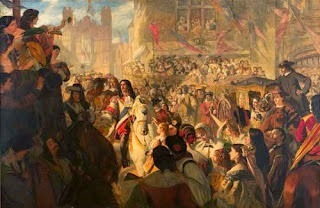
1660 Charles II arrived in London from exile in the Netherlands to reclaim his throne. Charles II was also born on this day.


363 Roman Emperor Julian defeated the Sassanid army in the Battle of Ctesiphon, under the walls of the Sassanid capital, but was unable to take the city.
 1167 Battle of Monte Porzio – A Roman army supporting Pope Alexander III was defeated by Christian of Buch and Rainald of Dassel.
1167 Battle of Monte Porzio – A Roman army supporting Pope Alexander III was defeated by Christian of Buch and Rainald of Dassel.  1176 Battle of Legnano: The Lombard League defeated Emperor Frederick I.
1176 Battle of Legnano: The Lombard League defeated Emperor Frederick I. 
1259 King Christopher I of Denmark died.

1414 Council of Constance.

1453 The Roman Empire in the east (Byzantine Empire) came to an end as Ottoman sultan Mehmet II captured Constantinople.

1660 Charles II arrived in London from exile in the Netherlands to reclaim his throne. Charles II was also born on this day.

Published on May 29, 2014 07:04
May 28, 2014
Origins of Inebriation Revealed
By Joseph Castro

 Prehistoric people of Europe didn't use mind-altering substances for hedonistic pleasure. Drugs and alcohol were an important part of ritual ceremonies.In prehistoric Eurasia, drugs and alcohol were originally reserved for ritual ceremonies, and weren't used merely to satisfy hedonistic motives, a new study suggests. What's more, given the sacred role of the substances, their use was likely highly regulated and only available to elite citizens.
Prehistoric people of Europe didn't use mind-altering substances for hedonistic pleasure. Drugs and alcohol were an important part of ritual ceremonies.In prehistoric Eurasia, drugs and alcohol were originally reserved for ritual ceremonies, and weren't used merely to satisfy hedonistic motives, a new study suggests. What's more, given the sacred role of the substances, their use was likely highly regulated and only available to elite citizens.
Many Eurasian cultures are known to have an ancient history with psychoactive substances, as evidenced by early written documents. The Greek historian Herodotus, for example, once described the Scythians' (Iranian equestrian tribes) post-funeral purification ceremony involving hemp, which dates back to the fifth century B.C.
But written records aren't the only indication of early drug and alcohol use.
"It is generally thought that mind-altering substances, or at least drugs, are a modern-day issue, but if we look at the archaeological record of prehistoric Europe, there are many data supporting their consumption," said study author Elisa Guerra-Doce, a prehistory expert at the University of Valladolid in Spain. "Apart from the presence of macrofossil remains of plants with these [mind-altering] properties, there are artistic depictions of opium poppies, for instance, and some designs in megalithic tombs may have been inspired by altered states of consciousness." [Trippy Tales: The History of 8 Hallucinogens]
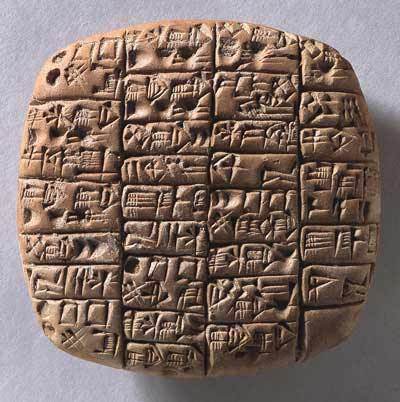
[image error] This cuneiform text dates back to the 6th year of prince Lugalanda who ruled about 2370 B.C. in southern Mesopotamia. It is an administrative document concerning deliveries of three sorts of beer to different recipients (to the palace and to a temple for offerings) and gives the exact quantities of barley and other ingredients used in brewing.
This cuneiform text dates back to the 6th year of prince Lugalanda who ruled about 2370 B.C. in southern Mesopotamia. It is an administrative document concerning deliveries of three sorts of beer to different recipients (to the palace and to a temple for offerings) and gives the exact quantities of barley and other ingredients used in brewing.
Credit: Max Planck Society
View full size imageDespite numerous indications, archaeologists have largely overlooked the use of mind-altering substances in Eurasian prehistory. So Guerra-Doce decided to sort through the scarce and scattered information in the scientific literature, in hopes of gaining a better understanding of the history and context of ancient drug and alcohol use.
She reviewed four lines of evidence: macrofossil remains of psychoactive plants, residues from fermented alcoholic drinks, psychoactive alkaloids (chemical compounds) on artifacts and skeletal remains, and artistic depictions of psychoactive plants and drinking scenes.
Widespread use
In prehistoric sites throughout Europe, archaeologists have found the remains of numerous psychoactive plant and fungi species, including opium poppy, deadly nightshade, hallucinogenic mushrooms and ergot fungus. However, it's not always possible to determine how people used the substances, if they did at all.
For instance, at a Neanderthal burial cave at Shanidar, in northern Iraq dating to around 60,000 B.C., researchers discovered the remains of many medical plant species, suggesting the grave belonged to a shaman. But other scientists argue that a gerbil-like rodent called the Persian jird may have brought the plants into the cave after the Neanderthal there had died.
Yet many archaeobotanical finds provide strong evidence for the prehistoric use of mind-altering substances. In particular, at an archaeological site near Bucharest, Romania, scientists found charred Cannabis seeds from plants in some tombs. The main psychoactive compound of marijuana is tetrahydrocannabinol(THC), which is most abundant in the female plants (Cannabis plants are typically either male or female, with male plants producing pollen that pollinates the seed-producing flowers of the female plant)."The presence of burnt seeds in these tombs proves that the prehistoric societies of eastern Europe were aware of this, and consequently, they burnt female plants," Guerra-Doce told Live Science. [Image Gallery: 7 Potent Medicinal Plants]
Alcoholic residues suggest many prehistoric Eurasians drank fruit wines, mead, beer (from barley and wheat) and fermented drinks made from dairy products.
The discovery of alcoholic fermentation appears to date back to about 7000 B.C. in China. By 5000 B.C., people in the Zagros Mountains of northwestern Iran drank wine instilled with pine resin (for its preservative or medicinal properties). And at a site in southeastern Armenia dating to 4000 B.C., scientists unearthed a fully equipped winery — they think the wine was made for mortuary practices, considering there were 20 burial graves, which contained drinking cups, next to the winemaking facility.
Importantly, though some pottery fragments containing residues of beer and wine come from settlements, most actually come from burial sites. "Many tombs have provided traces of alcoholic drinks and drugs," Guerra-Doce said. "I think these substances were used to aid in communication with the spirit world."
Some artistic representations also hint at ceremonial drug and alcohol use in prehistory. One of the most revealing items may be a 30-inch-tall (76 centimeters) terracotta figurineknown as the "Poppy Goddess." The figurine, found in an almost 3000-year-old cult chamber in Crete, depicts a bare-breasted woman with upraised arms and a head bearing three movable hairpins shaped like poppy capsules. Certain features of the capsules suggest how opium may have been extracted, and the figurine displays a serene facial expression, which some experts interpret as depicting a trancelike state gained from inhaling opium fumes.
Only for the elite?
Guerra-Doce's analysis further suggests that psychoactive substances may have been reserved for the elite. "The main evidence to support that idea is the archaeological contexts where they have been found: tombs of high-status individuals and restricted ceremonial places," she said.
For example, at a Bronze Age cemetery in southeastern Spain, archaeologists have found psychoactive alkaloids of opiates in tombs of the upper class. Similarly, a luxurious tomb in another area of Spain contained evidence of the hallucinogenic alkaloid hyoscyamine, which comes from the nightshade family of plants.
Alcohol also seems to have been mainly for the upper class. One of the most impressive examples comes from the so-called Hochdorf Chieftain's Grave in Germany — a Celtic burial chamber for a 40-year-old man that dates to around 530 B.C. In the princely tomb, researchers found an enormous bronze cauldron from Greece that contained 350 liters (92 gallons) of mead.
"I think that prior to a large-scale production, [alcoholic drinks] were reserved for special events, and they played a similar role as drug plants," Guerra-Doce said.After large-scale production became possible, alcohol likely became available to many people (not just elites), and its use shifted from ritualistic to hedonistic in nature, she added.
Drug plants, on the other hand, were never cultivated on a large scale. And though they were also eventually consumed for hedonistic purposes, this use is difficult to observe in the archaeological record, Guerra-Doce said. "Interestingly, the common names of some of these plants refer to madness, to evil spirits, to harmful effects, so I think a taboo was imposed in order to avoid their use for hedonistic purposes," she said.
http://www.livescience.com/45886-origins-of-inebriation-revealed.html

 Prehistoric people of Europe didn't use mind-altering substances for hedonistic pleasure. Drugs and alcohol were an important part of ritual ceremonies.In prehistoric Eurasia, drugs and alcohol were originally reserved for ritual ceremonies, and weren't used merely to satisfy hedonistic motives, a new study suggests. What's more, given the sacred role of the substances, their use was likely highly regulated and only available to elite citizens.
Prehistoric people of Europe didn't use mind-altering substances for hedonistic pleasure. Drugs and alcohol were an important part of ritual ceremonies.In prehistoric Eurasia, drugs and alcohol were originally reserved for ritual ceremonies, and weren't used merely to satisfy hedonistic motives, a new study suggests. What's more, given the sacred role of the substances, their use was likely highly regulated and only available to elite citizens.Many Eurasian cultures are known to have an ancient history with psychoactive substances, as evidenced by early written documents. The Greek historian Herodotus, for example, once described the Scythians' (Iranian equestrian tribes) post-funeral purification ceremony involving hemp, which dates back to the fifth century B.C.
But written records aren't the only indication of early drug and alcohol use.
"It is generally thought that mind-altering substances, or at least drugs, are a modern-day issue, but if we look at the archaeological record of prehistoric Europe, there are many data supporting their consumption," said study author Elisa Guerra-Doce, a prehistory expert at the University of Valladolid in Spain. "Apart from the presence of macrofossil remains of plants with these [mind-altering] properties, there are artistic depictions of opium poppies, for instance, and some designs in megalithic tombs may have been inspired by altered states of consciousness." [Trippy Tales: The History of 8 Hallucinogens]

[image error]
 This cuneiform text dates back to the 6th year of prince Lugalanda who ruled about 2370 B.C. in southern Mesopotamia. It is an administrative document concerning deliveries of three sorts of beer to different recipients (to the palace and to a temple for offerings) and gives the exact quantities of barley and other ingredients used in brewing.
This cuneiform text dates back to the 6th year of prince Lugalanda who ruled about 2370 B.C. in southern Mesopotamia. It is an administrative document concerning deliveries of three sorts of beer to different recipients (to the palace and to a temple for offerings) and gives the exact quantities of barley and other ingredients used in brewing.Credit: Max Planck Society
View full size imageDespite numerous indications, archaeologists have largely overlooked the use of mind-altering substances in Eurasian prehistory. So Guerra-Doce decided to sort through the scarce and scattered information in the scientific literature, in hopes of gaining a better understanding of the history and context of ancient drug and alcohol use.
She reviewed four lines of evidence: macrofossil remains of psychoactive plants, residues from fermented alcoholic drinks, psychoactive alkaloids (chemical compounds) on artifacts and skeletal remains, and artistic depictions of psychoactive plants and drinking scenes.
Widespread use
In prehistoric sites throughout Europe, archaeologists have found the remains of numerous psychoactive plant and fungi species, including opium poppy, deadly nightshade, hallucinogenic mushrooms and ergot fungus. However, it's not always possible to determine how people used the substances, if they did at all.
For instance, at a Neanderthal burial cave at Shanidar, in northern Iraq dating to around 60,000 B.C., researchers discovered the remains of many medical plant species, suggesting the grave belonged to a shaman. But other scientists argue that a gerbil-like rodent called the Persian jird may have brought the plants into the cave after the Neanderthal there had died.
Yet many archaeobotanical finds provide strong evidence for the prehistoric use of mind-altering substances. In particular, at an archaeological site near Bucharest, Romania, scientists found charred Cannabis seeds from plants in some tombs. The main psychoactive compound of marijuana is tetrahydrocannabinol(THC), which is most abundant in the female plants (Cannabis plants are typically either male or female, with male plants producing pollen that pollinates the seed-producing flowers of the female plant)."The presence of burnt seeds in these tombs proves that the prehistoric societies of eastern Europe were aware of this, and consequently, they burnt female plants," Guerra-Doce told Live Science. [Image Gallery: 7 Potent Medicinal Plants]
Alcoholic residues suggest many prehistoric Eurasians drank fruit wines, mead, beer (from barley and wheat) and fermented drinks made from dairy products.
The discovery of alcoholic fermentation appears to date back to about 7000 B.C. in China. By 5000 B.C., people in the Zagros Mountains of northwestern Iran drank wine instilled with pine resin (for its preservative or medicinal properties). And at a site in southeastern Armenia dating to 4000 B.C., scientists unearthed a fully equipped winery — they think the wine was made for mortuary practices, considering there were 20 burial graves, which contained drinking cups, next to the winemaking facility.
Importantly, though some pottery fragments containing residues of beer and wine come from settlements, most actually come from burial sites. "Many tombs have provided traces of alcoholic drinks and drugs," Guerra-Doce said. "I think these substances were used to aid in communication with the spirit world."
Some artistic representations also hint at ceremonial drug and alcohol use in prehistory. One of the most revealing items may be a 30-inch-tall (76 centimeters) terracotta figurineknown as the "Poppy Goddess." The figurine, found in an almost 3000-year-old cult chamber in Crete, depicts a bare-breasted woman with upraised arms and a head bearing three movable hairpins shaped like poppy capsules. Certain features of the capsules suggest how opium may have been extracted, and the figurine displays a serene facial expression, which some experts interpret as depicting a trancelike state gained from inhaling opium fumes.
Only for the elite?
Guerra-Doce's analysis further suggests that psychoactive substances may have been reserved for the elite. "The main evidence to support that idea is the archaeological contexts where they have been found: tombs of high-status individuals and restricted ceremonial places," she said.
For example, at a Bronze Age cemetery in southeastern Spain, archaeologists have found psychoactive alkaloids of opiates in tombs of the upper class. Similarly, a luxurious tomb in another area of Spain contained evidence of the hallucinogenic alkaloid hyoscyamine, which comes from the nightshade family of plants.
Alcohol also seems to have been mainly for the upper class. One of the most impressive examples comes from the so-called Hochdorf Chieftain's Grave in Germany — a Celtic burial chamber for a 40-year-old man that dates to around 530 B.C. In the princely tomb, researchers found an enormous bronze cauldron from Greece that contained 350 liters (92 gallons) of mead.
"I think that prior to a large-scale production, [alcoholic drinks] were reserved for special events, and they played a similar role as drug plants," Guerra-Doce said.After large-scale production became possible, alcohol likely became available to many people (not just elites), and its use shifted from ritualistic to hedonistic in nature, she added.
Drug plants, on the other hand, were never cultivated on a large scale. And though they were also eventually consumed for hedonistic purposes, this use is difficult to observe in the archaeological record, Guerra-Doce said. "Interestingly, the common names of some of these plants refer to madness, to evil spirits, to harmful effects, so I think a taboo was imposed in order to avoid their use for hedonistic purposes," she said.
http://www.livescience.com/45886-origins-of-inebriation-revealed.html

Published on May 28, 2014 14:32



